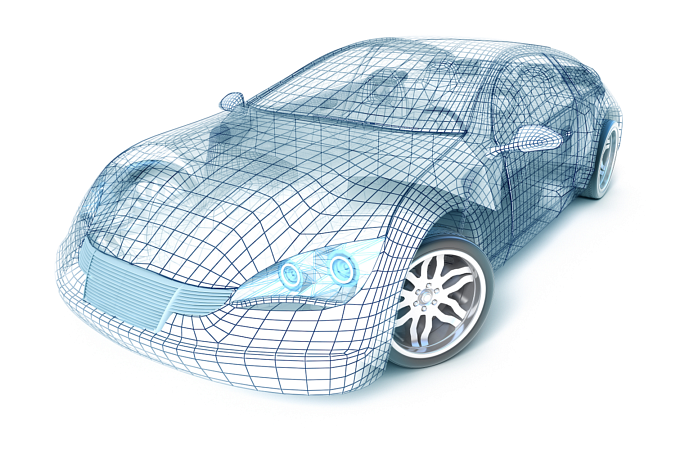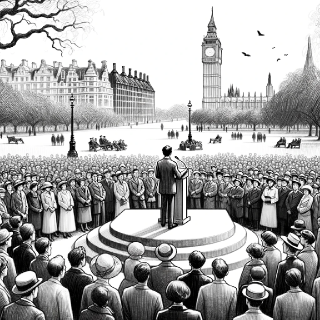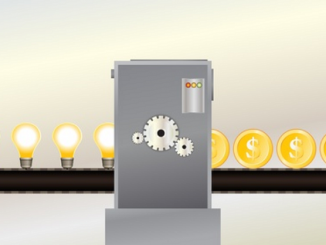
3D printers can turn a three-dimensional digital model into a tangible object without much hassle. The impact of this innovation will reshape global supply chains.
Disruptive technologies share a common characteristic: they develop quietly in the background for a long time before suddenly emerging and taking us by surprise. 3D printer technology is now poised to become the next megatrend.
What makes the 3D printer so special? First of all, the term ‘printer’ is probably not the best description for this technology. Traditional printing involves modifying a sheet of paper by adding ink to its surface, thereby creating a page with writing or images on it. 3D printers, on the other hand, don’t need paper or any medium at all. They create objects seemingly out of thin air — by layering special “ink” materials until the whole object takes shape.
What sounds like science fiction already works astonishingly well. To the horror of authorities, it is even possible to create a functioning gun using a 3D printer.
On the more peaceful side, it’s possible to create countless other items — mugs, lamps, jars, dinner plates, doorknobs, souvenirs such as miniatures of the Eiffel Tower or the Cologne Cathedral, and even toys.
The toy industry, in particular, may experience enormous disruption. Today, nearly all toys are produced in China — cheaply manufactured and exported worldwide with profit margins several times higher than production costs.
The traditional supply chain looks like this:
US-based toy manufacturer → China-based factory → toy shop → consumer
But what happens when every child can download the blueprint of a favorite toy and print it at home? The Chinese factory disappears from the chain. The toy shop is likely to vanish, too. The new supply chain becomes radically shorter:
US-based toy manufacturer → consumer
In this model, manufacturers are no longer producers of tangible goods but providers of digital blueprints. The benefits are obvious: lower costs, minimal inventory, reduced risk, and a significantly more sustainable and environmentally friendly process. It would also remove the need for low-wage labor, including child labor, that persists in some regions.
Toy manufacturers would transform from producers of physical goods into providers of intellectual property, selling designs directly to end consumers.
Now imagine applying this idea to other product categories. You could 3D-print a lamp with your favorite cartoon character, a dinner set that perfectly matches your kitchen, or even your own furniture, shoes, and eyewear. One day, when the technology matures, you might even print guitars, smartphones, cars — perhaps even homes.
And what if 3D printers could print out more 3D printers? The possibilities are staggering.
However, every disruption comes with a price. Contract manufacturers in China and elsewhere may not be the only ones affected. Brand owners themselves will face a major challenge: protecting their intellectual property.
3D printing could disrupt markets much like MP3 technology did. The Napster disaster showed what happens when intellectual property becomes easily transferable and replicable. Once digital blueprints for physical products spread online, piracy could explode. The value of brands might collapse, forcing companies to adopt new business models — subscription-based, ad-supported, or donation-driven.
Copyright enforcement would likely intensify, perhaps leading to even stricter internet regulations. The “3D printed gun” argument could easily be used to justify new layers of online surveillance and control.
Despite these open questions, one thing seems inevitable: 3D printers will continue to conquer the world. We are still in the early stages of this technology, but its capabilities are advancing fast. 3D printing will become powerful, affordable, and transformative.
As with MP3s, new marketing, sales, and distribution models will emerge, entire industries will form around this shift, and the 3D designer will likely become one of the most sought-after and best-paid professions.
Home-based production will be so compelling that consumers will demand it — just as they demanded digital music. Either producers offer a convenient, legal way to deliver digital designs, or piracy will dominate.
Let’s hope the business world has learned from the MP3 era and won’t repeat its mistakes. The 3D printing revolution cannot be stopped. You can’t fight it — so you might as well join it.
Let’s start a conversation on LinkedIn or X.com (formerly Twitter).
Let’s start a conversation on LinkedIn or X.com (formerly Twitter).
I am a project manager (Project Manager Professional, PMP), a Project Coach, a management consultant, and a book author. I have worked in the software industry since 1992 and as a manager consultant since 1998. Please visit my United Mentors home page for more details. Contact me on LinkedIn for direct feedback on my articles.






Be the first to comment